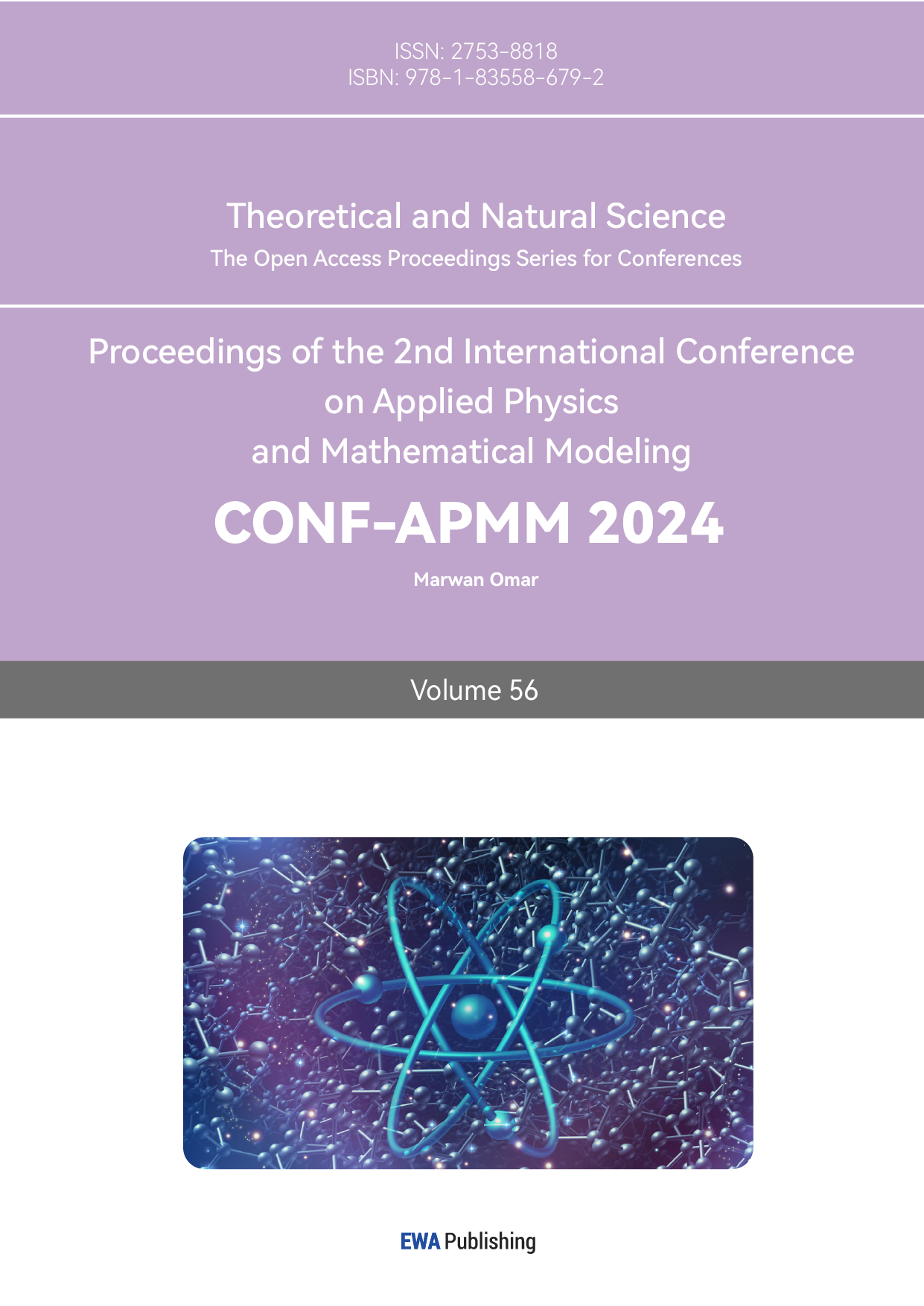References
[1]. Ronald L Panton. Incompressible flow. John Wiley & Sons, 2024.
[2]. Jeffrey S Marshall. Inviscid incompressible flow. John Wiley & Sons, 2001.
[3]. George H Shortley and Royal Weller. The numerical solution of laplace’s equation. Journal of Applied Physics, 9(5):334– 348, 1938.
[4]. H Feshbach and EL Lomon. The boundary condition model of strong interactions. Annals of Physics, 29(1):19–75, 1964. [5] S Richardson. On the no-slip boundary condition. Journal of Fluid Mechanics, 59(4):707–719, 1973.
[5]. Reindorf Nartey Borkor, Magnus Svard, and Peter Amoako-Yirenkyi. A stable scheme of the curvilinear shallow water¨ equations with no-penetration and far-field boundary conditions. Computers & Fluids, 269:106136, 2024.
[6]. Ruqiong Qin and Chunyi Duan. The principle and applications of bernoulli equation. In Journal of Physics: Conference Series, volume 916, page 012038. IOP Publishing, 2017.
[7]. Marco Roberto Thiele, Margot G Gerritsen, and Martin J Blunt. Streamline simulation. Society of Petroleum Engineers, 2011.
[8]. Peter Bradshaw and AD Young. Effects of streamline curvature on turbulent flow. Agard Paris, 1973.
[9]. Lu Chen, Shao Gang Liu, Dan Zhao, Hongtao Guo, Jundong Wei, and Yuxin Liu. Stability and drag reduction in turbulent flow of skin with quasi-periodic elastic supports. Proceedings of the Institution of Mechanical Engineers, Part M: Journal of Engineering for the Maritime Environment, 236:1057 – 1068, 2022.
[10]. Armin Zare, Binh K. Lieu, and Mihailo R. Jovanovic. Turbulent drag reduction by streamwise traveling waves. In´ 2012 IEEE 51st IEEE Conference on Decision and Control (CDC), pages 3122–3126, 2012.
Cite this article
Wu,Z.;Chen,Y. (2024). Simulation and Flow Field Analysis of Objects in Fluids. Theoretical and Natural Science,56,128-136.
Data availability
The datasets used and/or analyzed during the current study will be available from the authors upon reasonable request.
Disclaimer/Publisher's Note
The statements, opinions and data contained in all publications are solely those of the individual author(s) and contributor(s) and not of EWA Publishing and/or the editor(s). EWA Publishing and/or the editor(s) disclaim responsibility for any injury to people or property resulting from any ideas, methods, instructions or products referred to in the content.
About volume
Volume title: Proceedings of the 2nd International Conference on Applied Physics and Mathematical Modeling
© 2024 by the author(s). Licensee EWA Publishing, Oxford, UK. This article is an open access article distributed under the terms and
conditions of the Creative Commons Attribution (CC BY) license. Authors who
publish this series agree to the following terms:
1. Authors retain copyright and grant the series right of first publication with the work simultaneously licensed under a Creative Commons
Attribution License that allows others to share the work with an acknowledgment of the work's authorship and initial publication in this
series.
2. Authors are able to enter into separate, additional contractual arrangements for the non-exclusive distribution of the series's published
version of the work (e.g., post it to an institutional repository or publish it in a book), with an acknowledgment of its initial
publication in this series.
3. Authors are permitted and encouraged to post their work online (e.g., in institutional repositories or on their website) prior to and
during the submission process, as it can lead to productive exchanges, as well as earlier and greater citation of published work (See
Open access policy for details).
References
[1]. Ronald L Panton. Incompressible flow. John Wiley & Sons, 2024.
[2]. Jeffrey S Marshall. Inviscid incompressible flow. John Wiley & Sons, 2001.
[3]. George H Shortley and Royal Weller. The numerical solution of laplace’s equation. Journal of Applied Physics, 9(5):334– 348, 1938.
[4]. H Feshbach and EL Lomon. The boundary condition model of strong interactions. Annals of Physics, 29(1):19–75, 1964. [5] S Richardson. On the no-slip boundary condition. Journal of Fluid Mechanics, 59(4):707–719, 1973.
[5]. Reindorf Nartey Borkor, Magnus Svard, and Peter Amoako-Yirenkyi. A stable scheme of the curvilinear shallow water¨ equations with no-penetration and far-field boundary conditions. Computers & Fluids, 269:106136, 2024.
[6]. Ruqiong Qin and Chunyi Duan. The principle and applications of bernoulli equation. In Journal of Physics: Conference Series, volume 916, page 012038. IOP Publishing, 2017.
[7]. Marco Roberto Thiele, Margot G Gerritsen, and Martin J Blunt. Streamline simulation. Society of Petroleum Engineers, 2011.
[8]. Peter Bradshaw and AD Young. Effects of streamline curvature on turbulent flow. Agard Paris, 1973.
[9]. Lu Chen, Shao Gang Liu, Dan Zhao, Hongtao Guo, Jundong Wei, and Yuxin Liu. Stability and drag reduction in turbulent flow of skin with quasi-periodic elastic supports. Proceedings of the Institution of Mechanical Engineers, Part M: Journal of Engineering for the Maritime Environment, 236:1057 – 1068, 2022.
[10]. Armin Zare, Binh K. Lieu, and Mihailo R. Jovanovic. Turbulent drag reduction by streamwise traveling waves. In´ 2012 IEEE 51st IEEE Conference on Decision and Control (CDC), pages 3122–3126, 2012.









